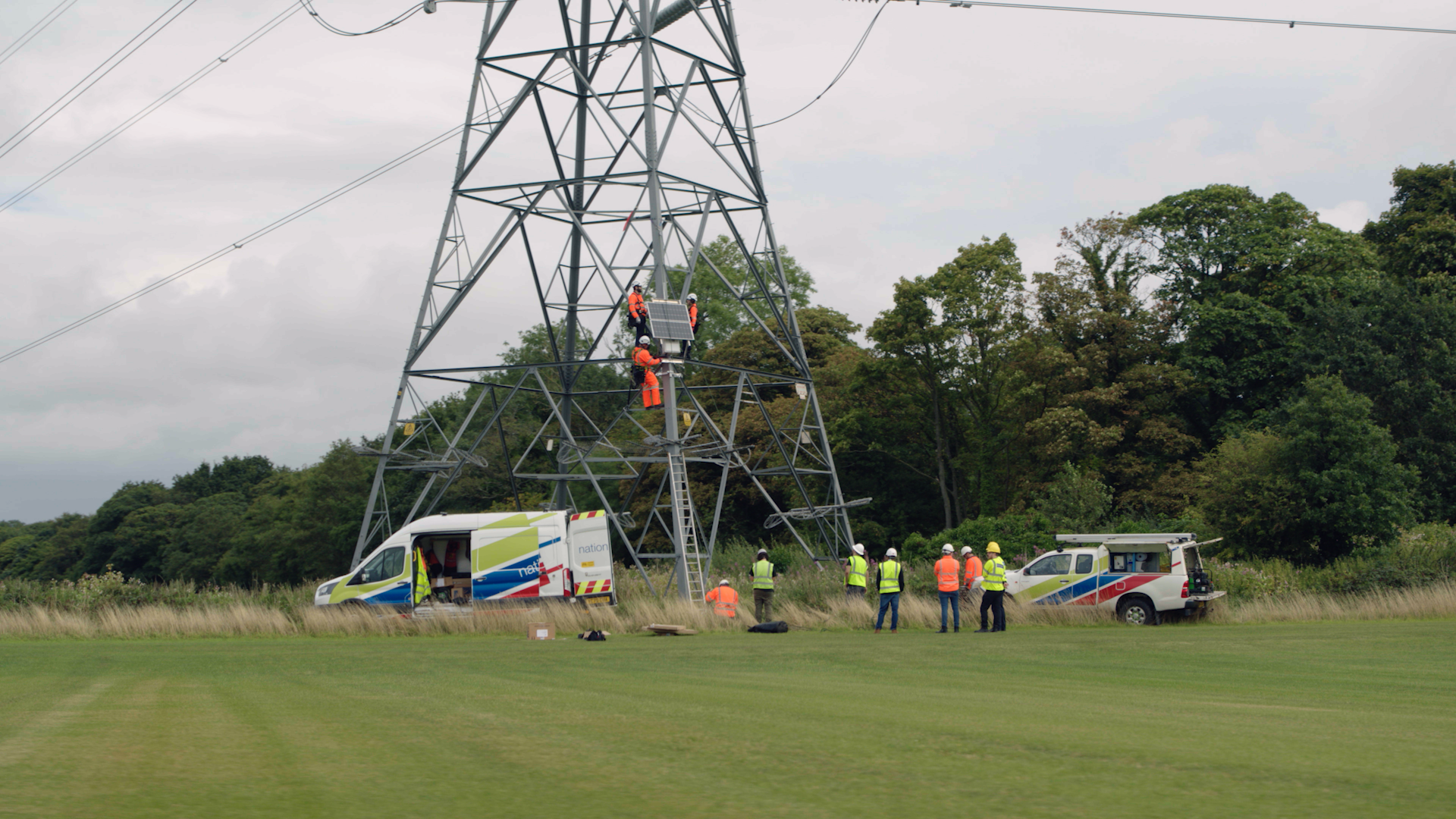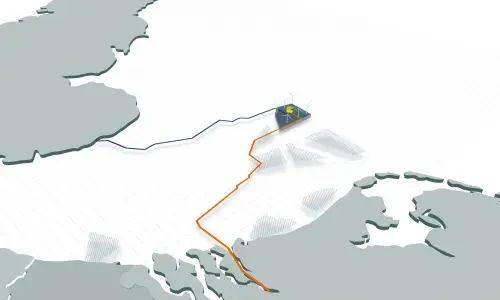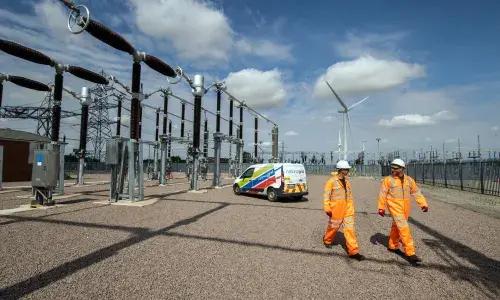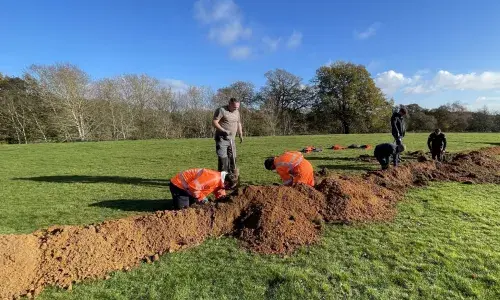
National Grid trials new technology which allows more renewable power to flow through existing power lines
- LineVision’s Dynamic Line Rating (DLR) technology trialled for first time in Great Britain following successful deployment on National Grid’s electricity networks in the US
- The sensors and data analytics platform will highlight spare capacity on overhead power lines allowing for the integration of more renewable power
- Technology has the potential to unlock 0.6GW of additional capacity, enough to power more than 500,000 homes and save £1.4 million in network operating costs per year based on the results from the US networks
- Combined with the construction of new infrastructure, the innovative technology forms part of National Grid’s work to upgrade and adapt the electricity network to meet increased demand and help deliver a net zero grid
National Grid is deploying technology on its electricity transmission network that could expand the capacity of its existing overhead power lines. Partnering with LineVision, the world’s only provider of non-contact overhead power line monitoring systems, it is installing sensors and dynamic line rating (DLR) platform on a circuit in the North of England to increase its power carrying limit.
The sensors will continuously monitor the transmission lines and apply advanced analytics to calculate the Dynamic Line Rating. The Dynamic Line Rating is determined by a power lines physical and electrical properties, such as size, resistance and maximum safe operating temperature, as well as the local weather conditions.
Electricity transmission lines have historically been operated using a “static” line rating calculated using conservative and static values for assumed weather conditions. LineVision’s “dynamic” line ratings determine capacity limits by combining real-time conductor properties and forecasted weather conditions, allowing for more informed grid operations and safely increasing operational limits.
The new technology has the potential to unlock 0.6GW of additional capacity a year, enough to power more than 500,000 homes. By increasing capacity and allowing more renewable power to flow this technology could also reduce constraint payments (where the electricity system operator pays generators to stop producing power to avoid overloading the transmission system) - with this trial potentially saving £1.4 million in constraint costs a year.
The two-year trial on a 275kV circuit between Penwortham and Kirkby in Cumbria follows the successful implementation of LineVision technology on National Grid’s networks in New York and Massachusetts and is part of National Grid’s ongoing investment to increase the grid’s capacity and connect the renewable power needed for Britain to reach its net zero by 2050.
Lydia Ogilvie, Director of Network Strategy and Operations for National Grid said: "To meet the increasing demand for electricity and deliver net zero, our network needs to grow, but at the same time we are continually looking at ways of expanding capacity on our existing infrastructure. I’m proud that National Grid is leading the way in using transformational and innovative engineering, integrating vital grid enhancing technologies like LineVision’s, to decarbonise and deliver world class reliability, at lowest costs for consumers.”
Hudson Gilmer, CEO of LineVision said: "If we are to meet ambitious climate targets by 2030, we need to essentially double the size of our grid. And while we need new transmission, we need to act now. LineVision’s DLR platform can double the integration of renewables on the grid right now and we’re pleased to work with our colleagues once again at National Grid to accelerate the path to a net-zero grid.”


